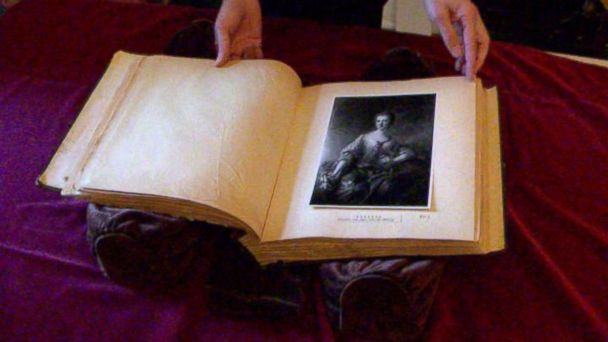Hitler's Last Known Tome of Stolen Art Donated to National Archives

(ABC News)
A leather-bound book used by Adolf Hitler to document Nazi Germany's pillage of precious artwork during World War II was donated to the National Archives today, the anniversary of the end of the war in Europe.
The so-called "Hitler Album Six" was a missing volume of a collection that would later be turned against the fuehrer's lieutenants as evidence during the 1945 Nuremberg trials.
A decayed dark cover and fragile binding belies the treasure trove within: Page after page of photographs of priceless works from some of history's greatest artists - all of them stolen by Axis forces in Europe.
The album was used by a German task force to systemically catalog their looting of Europe and was prepared for Hitler's own perusal. Forty-two other such volumes are known to exist and most are stored at the National Archives, but with hundreds of thousands pieces of art and cultural items still believed to be missing from the war, each page could be critical in piecing together the clues to their recovery, officials said.
"The National Archives is becoming the world's leading resource on Holocaust-era assets and these volumes enhance our role as that resource. Each album lays out further evidence of Hitler's premeditated theft of art and other cultural treasures," archivist David Ferriero said at today's unveiling. "Our history is not a closed chapter. New evidence turns up and gives us more to ponder and study."
Album Six itself disappeared from Hitler's mansion in the Bavarian Alps during the waning days of the war: An American soldier serving in the region took the book as a memento, not realizing its significance, officials said. It stayed in the veteran's family and remained in obscurity for decades until his nephew made contact with the Monuments Men Foundation - an organization which seeks to recover lost cultural artifacts of the war. It is named for the original allied forces unit whose mission was to recover those items, recently dramatized in the film, "The Monuments Men."
Foundation chair Robert Edsel, author of the non-fiction book on which the movie is loosely based, explained the difficulty in recovering lost items from the war. Some were intentionally taken by governments or collectors, others pocketed as an innocent-looking souvenir to the naked eye.
"They were part of the crime scene, but no one understood it as that at the time," he said.
Also on hand for the ceremony was Harry Ettlinger, a retired Army sergeant and one of the last surviving members of the unit. Ettlinger, a German-American veteran who was the inspiration for the role played by actor Dimitri Leonidas, reflected on returning to the country of his birth during the war.
One of photos that the Nazis took a photo of is an artwork in a museum in the German city in which Ettlinger was born, he recalled.
"I lived three blocks away from it but was not allowed to see it because I was Jewish," he said. "And that particular work was of a self-portrait of Rembrandt, so in the Monuments Men I finally got to come home and see it."